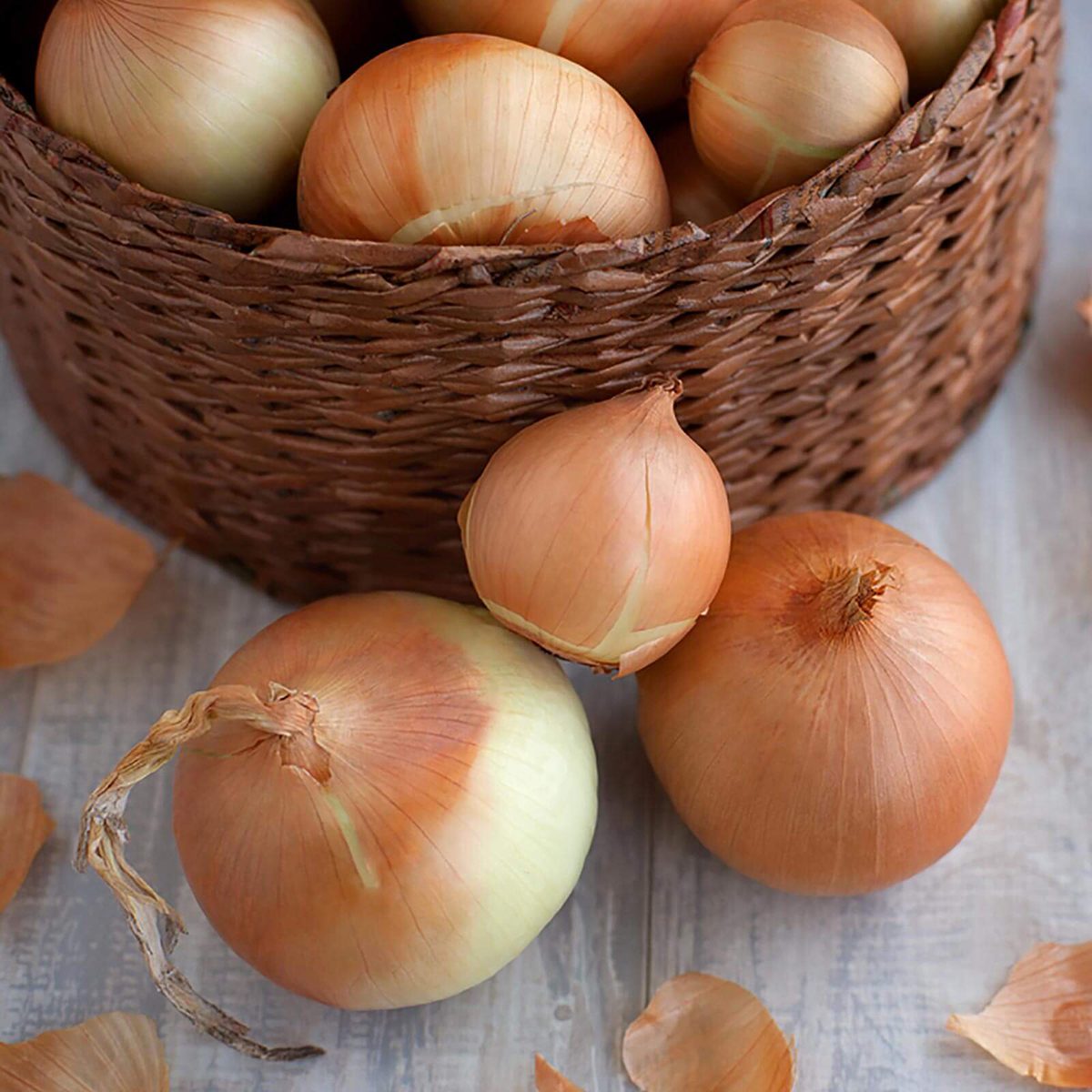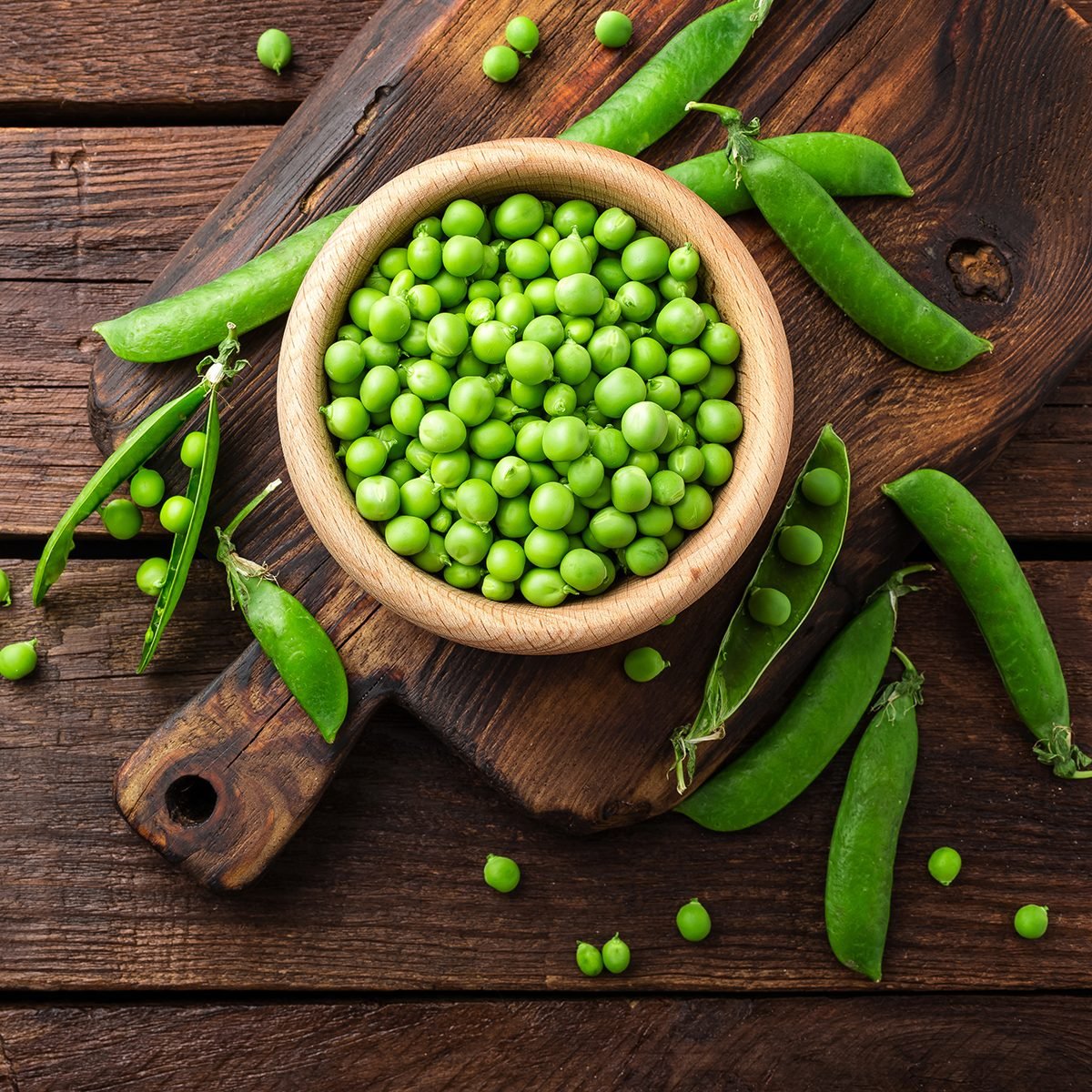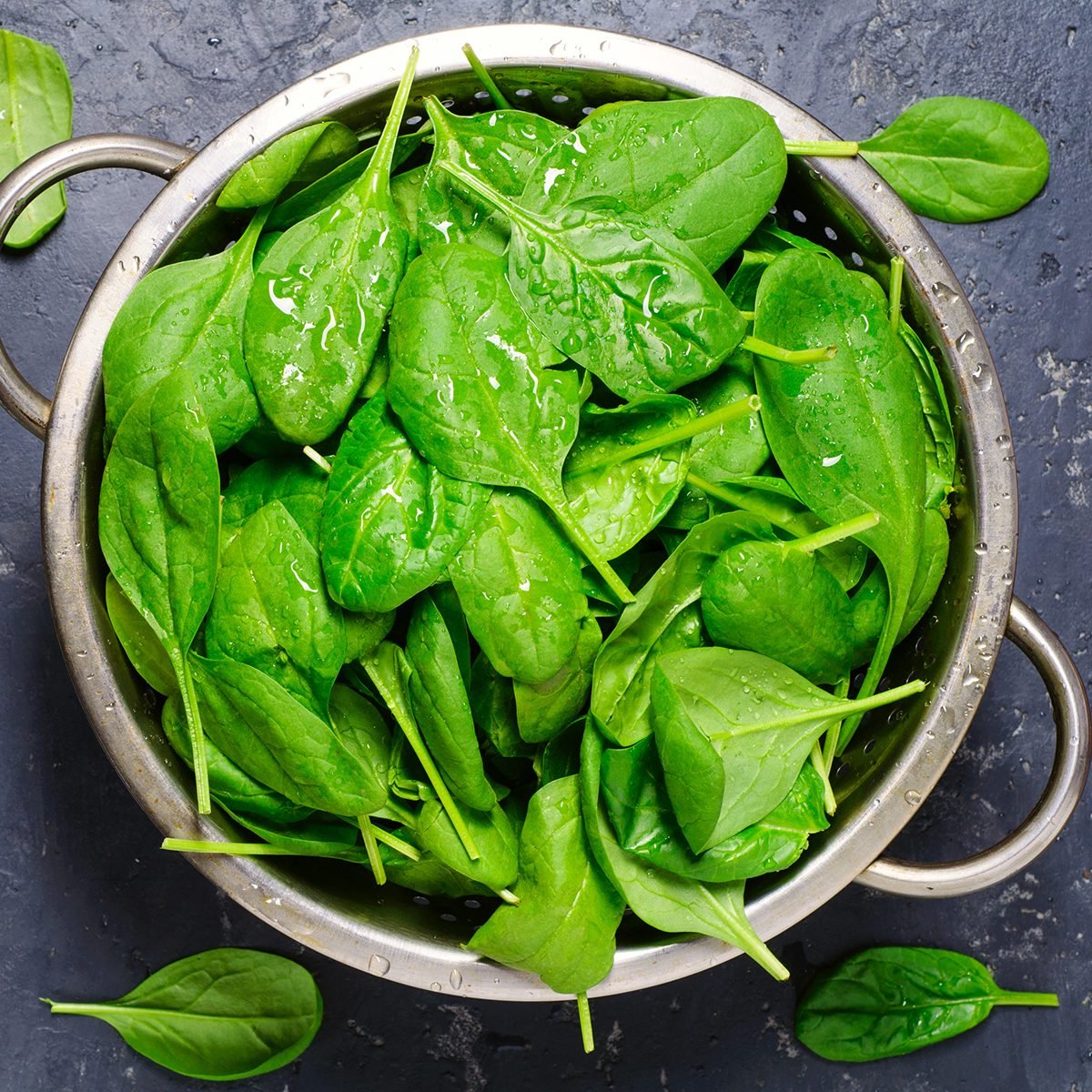
Onions
You’ll get the most out of this veggie’s cancer-fighting antioxidants by eating it raw; cooking onions at a high heat reduces the benefits of phytochemicals that protect against lung and prostate cancer. Try combining chopped raw onions with tomatoes, avocado and jalapeño peppers for a blood sugar–friendly pico de gallo-like dip. Finish with a splash of lime juice. Before you get chopping, learn the answer to your big question: Why do onions make you cry?

Corn
On the cob or off, it’s all good! A study in the Journal of Agricultural Food and Chemistry found that the longer corn was cooked, the higher the level of antioxidants like lutein, which combats blindness in older adults. Here are 29 fun ways you can eat fresh corn on the cob this summer.

Peas
Tiny but mighty, one study in the International Journal of Cancer found that daily consumption of green peas along with other legumes lowered the risk of stomach cancer. And peas are good for more than just a side dish. These 29 recipes start with a bag of frozen peas.

Kale
Standing out even among all the leafy greens, this is one of the healthiest vegetables in your supermarket. Kale’s curly green leaves are chock full of vitamin C, an antioxidant that may lower levels of LDL, or “bad” cholesterol. After grabbing your leafy greens, try them in one of these 50 tasty recipes.

Broccoli
Broccoli is full of cancer-fighting antioxidants. One study found men who ate five servings or more per week of cruciferous veggies (including these green vegetables) were half as likely to develop bladder cancers over a ten-year period as men who rarely ate them. If you’re not a huge fan of broccoli, try one of these broccoli recipes that almost everyone loves.

Red bell pepper
One medium pepper is light on calories (just 32 per pepper) but heavy on vitamin C, providing 150 percent of the recommended daily value. The antioxidant is known to help ward off atherosclerosis, which can lead to heart disease. Talk about healthiest vegetables. Check out these 13 foods with vitamin C that aren’t an orange.

Spinach
Spinach is packed with carotenoids—antioxidants that promote healthy eyes and help prevent macular degeneration, the leading cause of blindness in older adults. Cooking these green vegetables helps make lutein (a carotenoid) more absorbable by your body. These 21 spinach side dishes are perfect for when you’re not in the mood for a salad.

Alfalfa sprouts
This tiny powerhouse is rich in beta-carotene, an antioxidant that protects against lung cancer and helps maintain healthy skin, hair, nails, gums, glands, bones and teeth. It’s also a good source of vitamin E, which may help prevent heart attacks and strokes, and lower the risk of death from bladder cancer. By the way, these are the fruits and veggies you should, and shouldn’t, peel before eating.

Brussels sprouts
The antioxidants in these green vegetables can help detoxify cancer-causing free radicals, and with 80 percent of your daily vitamin C in just 1/2 cup, also help fight heart disease and ward off cataracts. Try sautéing your brussels sprouts with a little bacon or olive oil and mustard for a smoky kick. It can’t hurt to work some of these most nutritious foods in the world into your diet as well.

Beets
Roasted or pickled, this root vegetable contains high levels of antioxidants that fight cancer, as well as lutein, which protects the eyes. But don’t throw out those leaves! Beet greens are the most nutritious part of the vegetable and can be cooked like other dark leafy green vegetables such as spinach, mustard greens and kale. Learn how to cook beets like a pro, here.
The post 10 of the Healthiest Vegetables You Can Eat appeared first on Taste of Home.
Alyssa Jung